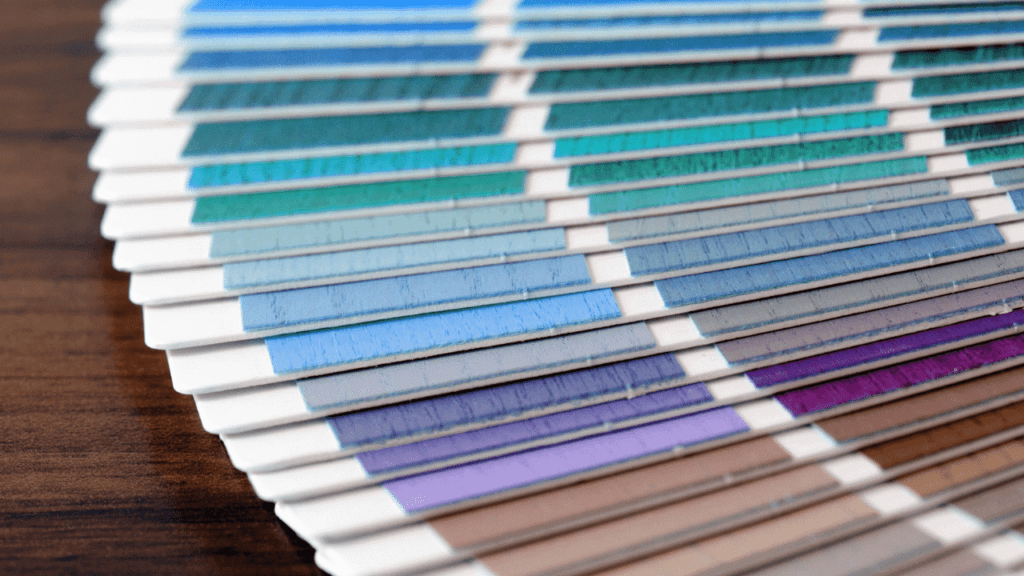I remember learning about the color wheel as a child and how mixing colors can create new colors. It was exciting to mix the colors and see what would come out.
The three primary colors of red, green, and yellow resulted in a variety of colors depending on which colors were mixed and in what amounts.
But now and then, two odd colors would be mixed and sometimes the result would be a beautiful hue, while other times the color would be rather drab.
Table of Contents
What Color Brown and Blue Makes
Mixing blue with brown will create a color palette between a muddy brown and a dark blue-green hue. Mixing true brown and true blue will create a burnt amber color. The result depends on the amount of each color in the mix. This means that several different colors can be created by mixing these two colors.
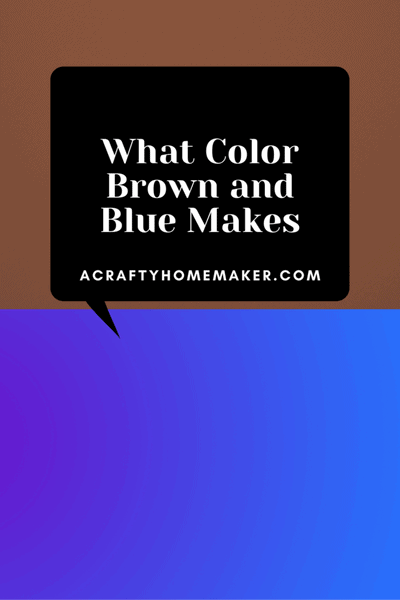
The color wheel
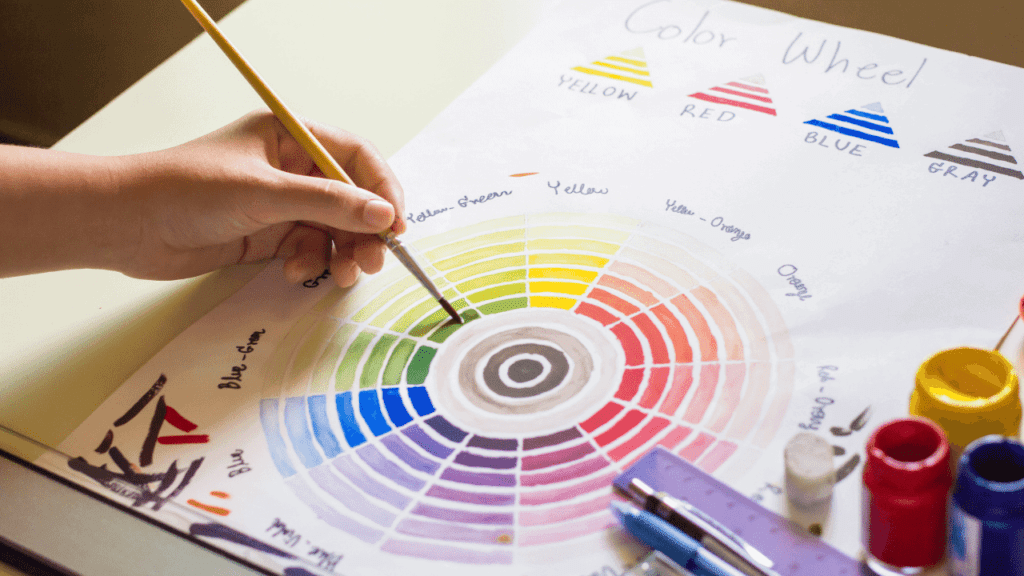
Let’s do a quick refresher for those who don’t remember.
The color wheel highlights the relationship between different colors on the spectrum.
Colors on the spectrum are made up of three categories.
There are primary, secondary, and tertiary colors.
Primary colors are the base colors that can create all other colors on the spectrum and include red, yellow, and blue.
Then there are secondary colors.
These colors, as mentioned above, originate by mixing primary colors. Colors in the secondary category include, among others, voile, green, and orange.
And finally, there are tertiary colors. Tertiary colors are created by mixing secondary and primary colors.
Colors in this range include blue-green, blue-violet, red-violet, etc.
Understanding the color wheel means understanding how colors are mixed and what to expect from mixing different colors.
Different shades of brown
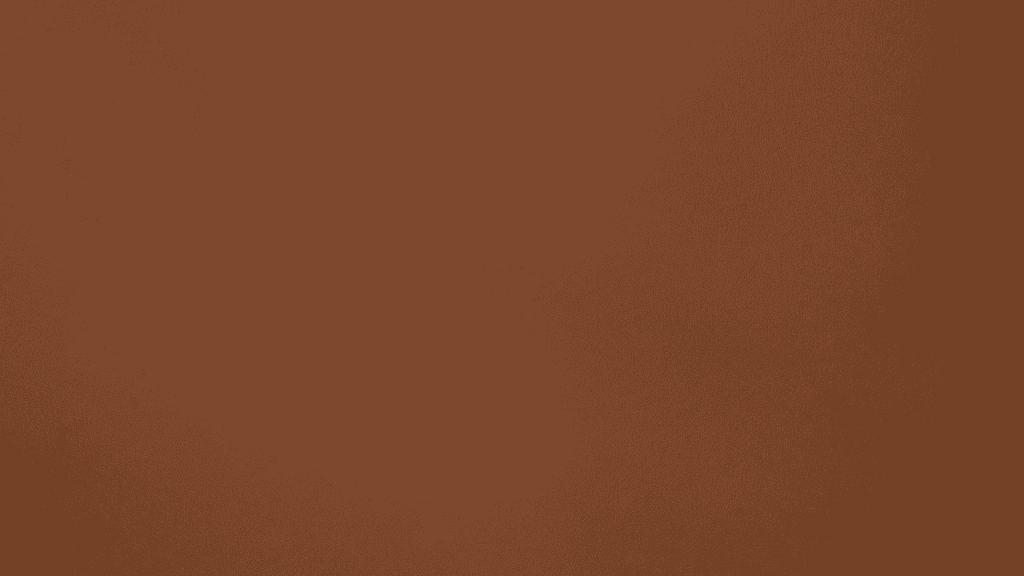
Brown is created by mixing primary colors. It is created by mixing the primary colors red, yellow, and blue.
Mixing blue and orange will also create a shade of brown.
Light brown is created by mixing primary colors in equal parts and adding white to lighten the shade.
Chocolate brown is created by adding equal parts primary colors and then mixing black into the colors until the desired shade of dark brown is achieved.
It is considered a neutral shade.
The color brown comes in a variety of shades. The hue is determined in the mixing process. Adding a higher quantity of one of the primary colors will change the outcome. These are several shades of brown:
- Burnt umber
- Chestnut
- Rosy brown
- Dark brown
- Beaver
- Wenge
- Smokey topaz
- Desert sand
Brown is created by mixing red, yellow, and black, or orange and black.
The color brown symbolizes many things. When thinking of this shade, some things come to mind, such as the earth, a forest, trees, stability, and strength.
Different shades of blue
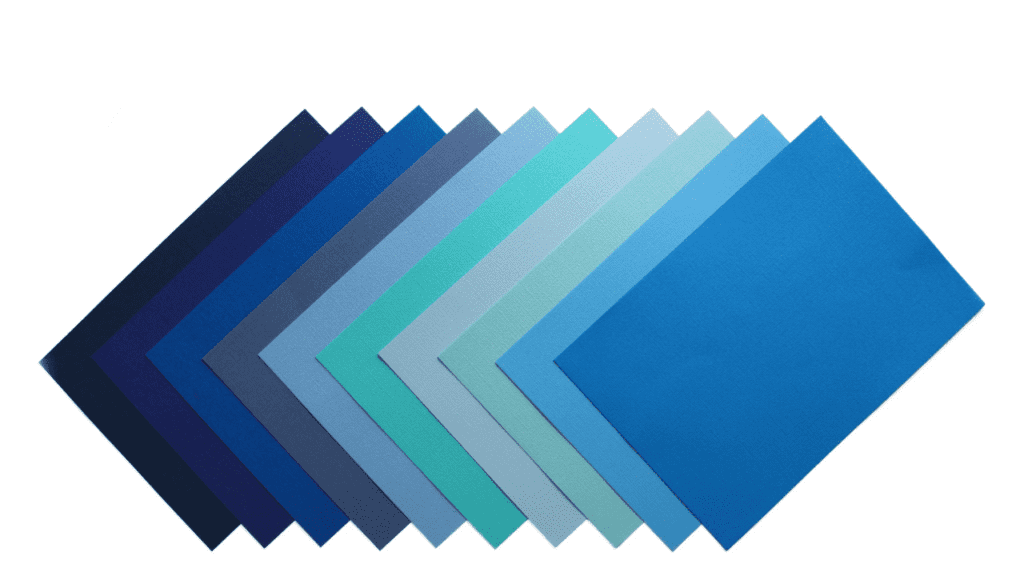
Similarly, blue comes in a variety of tints as well. Blue is considered the most loved color in the world and also the rarest color in nature. Blue lies between violet and green on the color spectrum.
In order to create a shade of true blue, mix magenta (purplish-red) with cyan (greenish-blue). True blue can be used to create other shades of blue.
True blue can be lightened by adding shades of white. The more white is added the lighter the blue will become.
Both ultramarine blue and cobalt blue can be mixed with white to create different shades of light blue. Darker shades of blue can be created by adding black to the mixture. The more black that is added the darker the shade of blue will be.
Some variety of shades of blue include:
- Light Blue Color
- Baby Blue Color
- Turquoise Color
- Royal Blue Color
- Navy Blue Color
- Cobalt Blue Color
- Tiffany Blue Color
- Midnight Blue Color
Blue is a primary color and is used to create many of the other colors in the color palette.
It is the color associated with the sky and the ocean as well as freedom, intuition, imagination, wisdom, confidence, stability, and faith.
What colour does brown and blue make
It’s clear from the previous paragraphs that mixing these two colors will result in an entire color spectrum of colors. Each color combination will yield a different result.
However, when it comes to mixing true blue and true brown the result is the same: Burnt Umber.
In addition, it needs to be noted that there are many variables when mixing blue and brown. These include tone, shade, tint, and value.
Furthermore, as mentioned before, the result will be highly influenced by the ratio difference of each color that is added to the mix.
Higher ratio blue
If you mix equal parts of brown and blue, you should expect a burnt orange. However, this is only true if the two colors in question are considered original primaries and neutrals.
Furthermore, if the ratio is slightly skewed and the more blue pigment is added to the mix, you can expect the blue hue to color and overpower the brown hue.
The result is shades that range from medium gray to dark gray.
Higher ratio brown
On the other hand, if there is more brown hue in the mixture then you can expect the brown tint to overpower the blue tint creating a purple shade.
Frequently Asked Questions About Mixing Colors
What color will I get if I mix powder blue and light brown?
This depends largely on the ratio of each color in the mixture. You can expect shades of gray ranging from warmer to cooler tones. These two colors are complementary in tone and hue.
What color cannot be mixed?
Blue, yellow, and red are the primary colors in the color spectrum. You cannot mix any one of these colors by mixing the other two colors.
Conclusion On What Color Brown and Blue Makes
Not all shades of blue and brown mixed together deliver a flattering color. Some shades can be considered warm tones while other shades will be considered cool tones.
This will depend largely on the ratio of brown to blue or blue to brown.
Mixing colors is a fun activity and could result in a completely new color that may be added to the color spectrum.
So now you know what color brown and blue makes!

